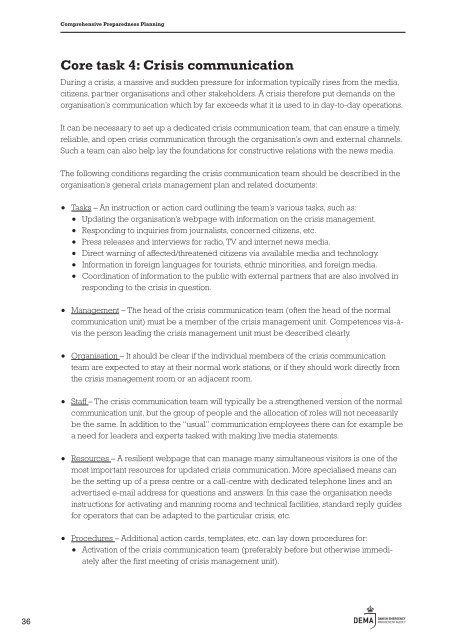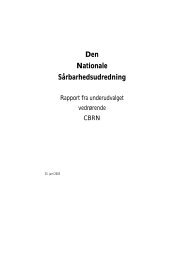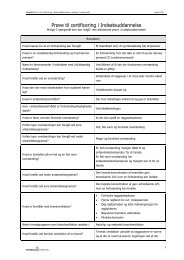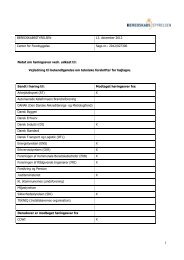Comprehensive Preparedness Planning
Comprehensive Preparedness Planning
Comprehensive Preparedness Planning
You also want an ePaper? Increase the reach of your titles
YUMPU automatically turns print PDFs into web optimized ePapers that Google loves.
<strong>Comprehensive</strong> <strong>Preparedness</strong> <strong>Planning</strong>Core task 4: Crisis communicationDuring a crisis, a massive and sudden pressure for information typically rises from the media,citizens, partner organisations and other stakeholders. A crisis therefore put demands on theorganisation’s communication which by far exceeds what it is used to in day-to-day operations.It can be necessary to set up a dedicated crisis communication team, that can ensure a timely,reliable, and open crisis communication through the organisation’s own and external channels.Such a team can also help lay the foundations for constructive relations with the news media.The following conditions regarding the crisis communication team should be described in theorganisation’s general crisis management plan and related documents:••Tasks – An instruction or action card outlining the team’s various tasks, such as:•••Responding to inquiries from journalists, concerned citizens, etc.••Press releases and interviews for radio, TV and internet news media.•••• Updating the organisation’s webpage with information on the crisis management.• Direct warning of affected/threatened citizens via available media and technology.• Information in foreign languages for tourists, ethnic minorities, and foreign media.• Coordination of information to the public with external partners that are also involved inresponding to the crisis in question.••Management – The head of the crisis communication team (often the head of the normalcommunication unit) must be a member of the crisis management unit. Competences vis-àvisthe person leading the crisis management unit must be described clearly.••Organisation – It should be clear if the individual members of the crisis communicationteam are expected to stay at their normal work stations, or if they should work directly fromthe crisis management room or an adjacent room.••Staff – The crisis communication team will typically be a strengthened version of the normalcommunication unit, but the group of people and the allocation of roles will not necessarilybe the same. In addition to the “usual” communication employees there can for example bea need for leaders and experts tasked with making live media statements.••Resources – A resilient webpage that can manage many simultaneous visitors is one of themost important resources for updated crisis communication. More specialised means canbe the setting up of a press centre or a call-centre with dedicated telephone lines and anadvertised e-mail address for questions and answers. In this case the organisation needsinstructions for activating and manning rooms and technical facilities, standard reply guidesfor operators that can be adapted to the particular crisis, etc.••Procedures – Additional action cards, templates, etc. can lay down procedures for:•• Activation of the crisis communication team (preferably before but otherwise immediatelyafter the first meeting of crisis management unit).36
















